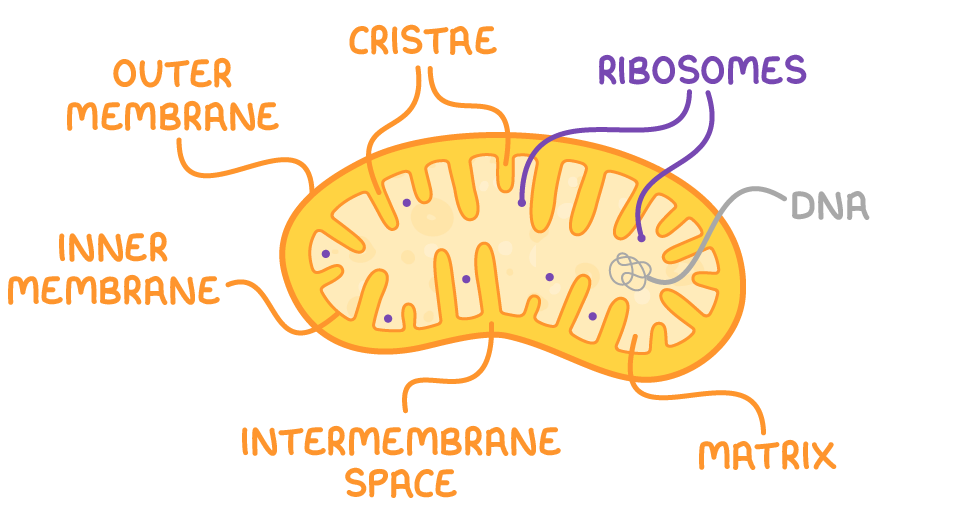Mitochondrion Structure
This lesson covers:
- An overview of the structure of mitochondria
- How the structure of mitochondria relates to their functions
Overview of mitochondria structure
Mitochondria are the site of aerobic cellular respiration.
Metabolically active cells, such as muscle cells, have a higher number of mitochondria, reflective of their energy demands.

The structure of a mitochondrion includes:
- An outer membrane - This separates the contents of the mitochondrion from the rest of the cell.
- Intermembrane space - This is the space between the outer and inner membranes into which protons are pumped during oxidative phosphorylation.
- An inner membrane - This contains the proteins involved in oxidative phosphorylation.
- Cristae - These are folds in the inner membrane of mitochondria.
- The matrix - This is the space within the inner membrane that is the site of the link reaction and the Krebs cycle.
- Mitochondrial DNA - This codes for some of the proteins required for the mitochondrion to function.
- Mitochondrial ribosomes - These are used for protein synthesis within the mitochondria.
How mitochondria structure relates to their functions
The main function of mitochondria is to produce large quantities of ATP, primarily through oxidative phosphorylation.
It has several adaptations for this function:
- The matrix contains all the enzymes needed for the link reaction and the Krebs cycle.
- The mitochondrial DNA and ribosomes allow it to produce proteins like enzymes rapidly.
- The cristae significantly increase the inner membrane's surface area, so it can contain more proteins like those in the electron transport chain and enzymes like ATP synthase.
- The intermembrane space is small, so the proton concentration gradient between the intermembrane space and the mitochondrial matrix builds up quickly.